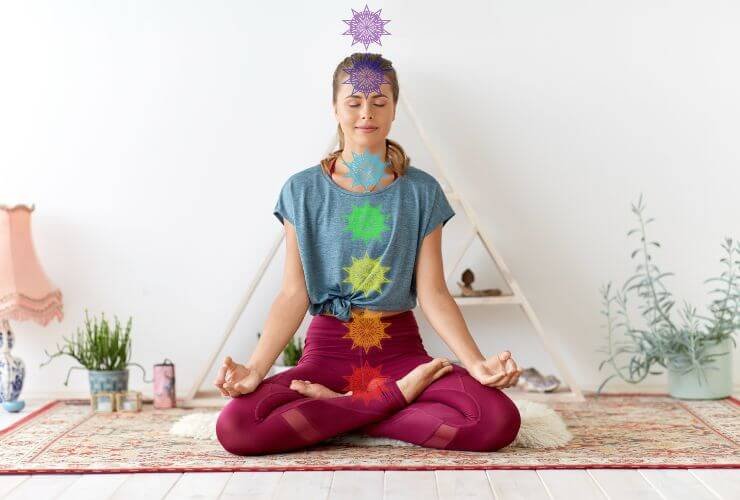Vrikshasana, or Tree Pose, is a standing balance asana in yoga that symbolizes strength, stability, and the grace of a tree. This pose challenges and improves balance, focus, and poise, and is accessible to yogis of all levels with various modifications available.
How to Do Vrikshasana (Tree Pose)
- Starting Position: Begin standing in Tadasana (Mountain Pose), with your feet together and arms by your sides.
- Shifting Weight: Shift your weight onto your left foot, keeping the inner foot firm to the ground, and bend your right knee.
- Placing the Right Foot: Bring the right foot up to rest on the inner left thigh, calf, or ankle (avoid placing the foot on the knee), with the toes pointing downwards. The right knee should be pointing out to the side, opening the hip.
- Finding Balance: Once balanced, bring your palms together in prayer position at your chest (Anjali Mudra) or extend them overhead for more challenge.
- Focus and Hold: Focus your gaze on a fixed point in front of you to help maintain balance. Hold the pose for 30 seconds to 1 minute, breathing steadily.
- Releasing the Pose: Gently lower your right foot to the ground, returning to Tadasana, and repeat on the other side.
Benefits of Vrikshasana
- Improves Balance and Stability: Strengthens the legs and core, improving overall balance and stability.
- Opens the Hips: Helps in opening the hips, improving flexibility in the hip region.
- Enhances Concentration: The focus required to maintain balance improves concentration and mental clarity.
- Strengthens Ligaments and Tendons: The pose strengthens the ligaments and tendons of the feet.
- Builds Self-confidence and Poise: Mastering a balance pose like Vrikshasana can enhance self-confidence and poise, both on and off the mat.
Contraindications
- High Blood Pressure: Those with high blood pressure should avoid raising their arms overhead.
- Recent or Chronic Knee Injuries: Individuals with knee injuries should be cautious, especially in placing the foot against the opposite leg.
- Balance Issues: Use a wall or chair for support if you have balance issues.
Modifications and Tips
- Use Support: Place a hand on a wall or chair if you’re struggling with balance.
- Avoid Placing Foot on the Knee: To prevent injury, place the foot either above or below the knee, not directly on it.
- Focus Your Gaze: Find a fixed point (Drishti) to focus your gaze on, which helps maintain balance.
Conclusion
Vrikshasana embodies the strength, stability, and grace of a tree, offering numerous benefits to practitioners, including improved balance, flexibility, and focus. Whether you’re a beginner or an experienced yogi, Tree Pose can be adapted to meet your level of practice, making it a valuable addition to your yoga routine.




